The six shortlisted entries in the RIBA competition to design new electricity pylons for the UK have been announced.
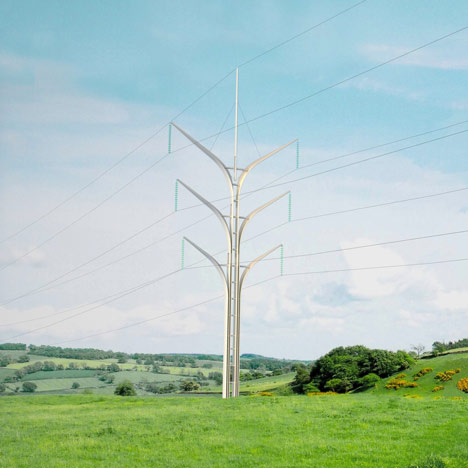
Amanda Levete Architects and Arup propose a bow-like pylon (top), whileGustafson Porter have designed a structure with curving branches (above).
Via DEZEEN
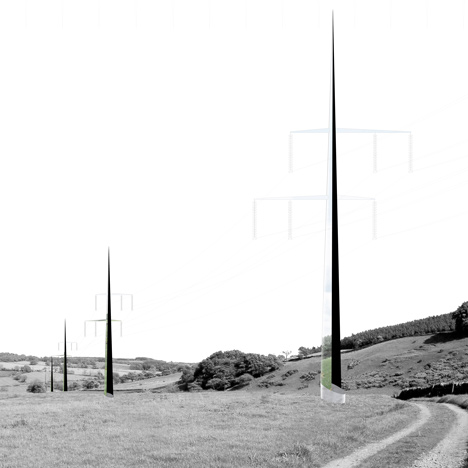
Ian Ritchie Architects collaborated with Jane Wernick Associates to design an asymmetrical pylon (above).

Knight Architects stripped away all unnecessary and oversized components for the design of their Y-shaped structure (above), while Bystrup propose a T-shaped pylon with triangular conductors (below).
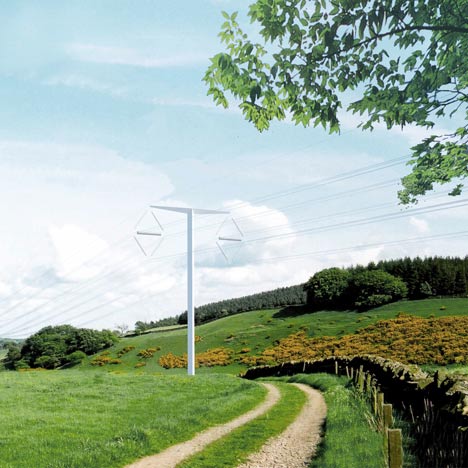
Newtown Studio and Structure Workshop’s proposal is a round lattice with a frame that thins towards the top (below).
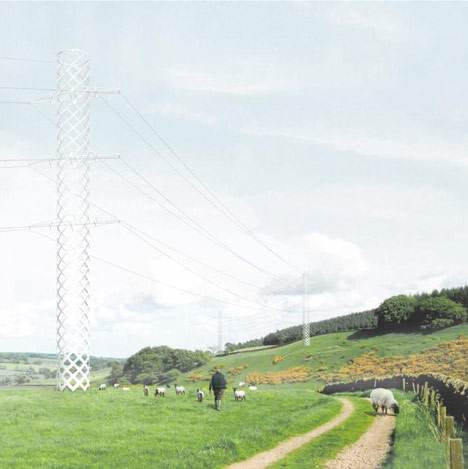
Models of each entry are on show at the V&A museum in London until 5 October.
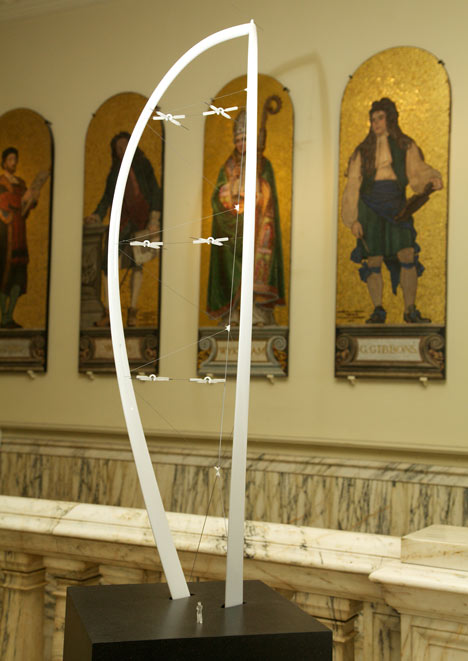
The Pylon for the Future competition was organised in collaboration with theDepartment of Energy and Climate Change and the National Grid.
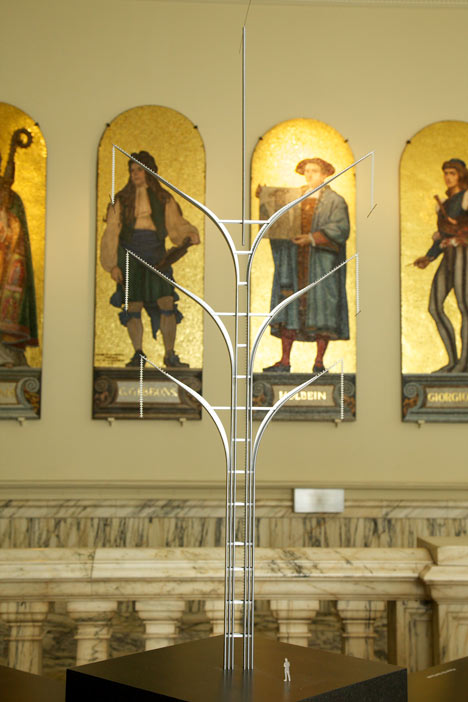
A £10,000 prize fund will be divided among the winning teams and their designs will be considered for development by National Grid.

Dezeen announced the launch of the competition back in May – see our earlier Dezeen Wire.
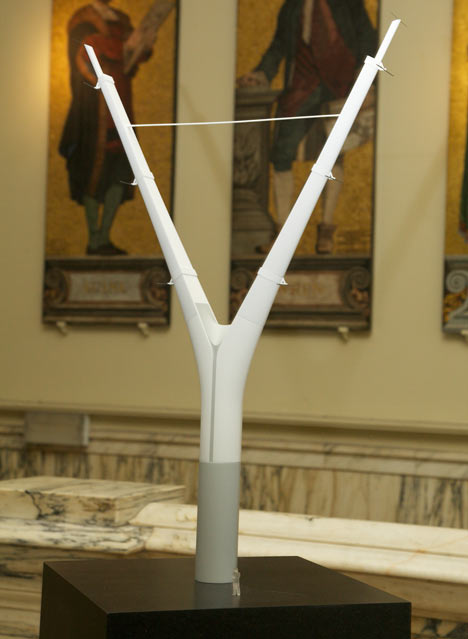
Another popular story about electricity pylons on Dezeen features structures shaped like human figures - see our earlier story here and see all our stories about pylons here.
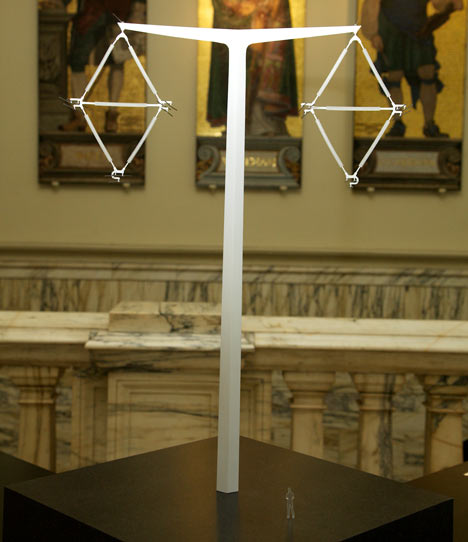
Photography is by Zoe Norfolk.
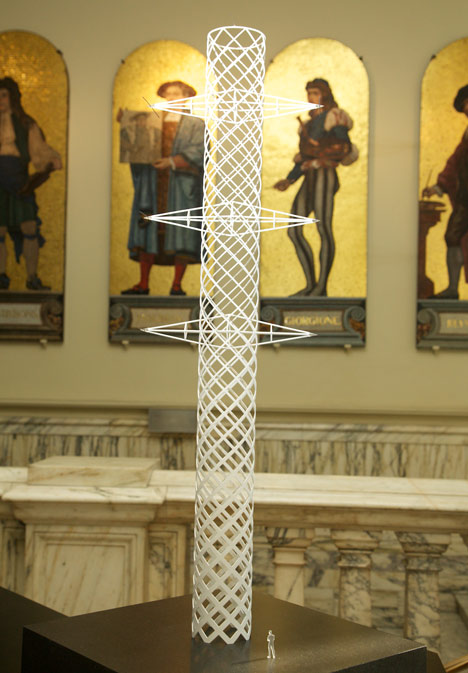
Here are some more details from the competition organisers:
A vision of our electric future: What might Britain’s new pylons look like?
Six Pylon Design Competition finalists unveiled
Chris Huhne opened a display featuring scale models of six striking designs for new electricity pylons to the public today at the Victoria and Albert Museum. The “Pylon for the Future” display forms part of the London Design Festival and is open to the public until 05 October 2011.
The finalists are:
- Silhouette by Ian Ritchie Architects and Jane Wernick Associates
- T-Pylon by Bystrup Architecture, Design and Engineering
- Y-Pylon by Knight Architects with Roughan & O’Donavon, and ESB International in association with MEGA
- Flower Tower by Gustafson Porter with Atelier One, and Pfisterer
- Plexus by Al-A with Arup
- Totem by New Town Studio, with Structure Workshop
Speaking to the finalists Energy and Climate Change Secretary Chris Huhne said:
“Britain will see the equivalent of twenty new power stations constructed by 2020, and we need to use electricity pylons to get this new, low carbon energy to your televisions and toasters, dishwashers and DVD players. We must make sure that we take into account the visual impact on the landscape and also the view of the public, and this is what the pylon design competition is all about. I am highly impressed by the quality of these designs and I hope everyone takes the time to get involved and give their view.”
To coincide with this pylon design display, National Grid has today published its new approach to building new transmission infrastructure. Using this approach, National Grid will put greater emphasis on mitigating the visual impact of its new electricity lines, while balancing this with the need to minimise household energy bills.
National Grid’s Executive Director UK, Nick Winser said:
“Connecting Britain’s new power stations to our homes and businesses will be one of the great infrastructure challenges of the next decade and beyond. Through the use of new technology, pylon design, extensive consultation and undergrounding where appropriate, our new approach will ensure we consider very seriously the visual impact of new transmission lines.”
Chris Huhne commented:
“National Grid’s approach is very welcome, and is consistent with Government policy set out in the National Policy Statements, which Parliament approved in July. Pylons are a vital part of the grid but people in areas potentially affected by new transmission lines can be reassured that alternatives to overhead lines will be actively explored, with undergrounding wherever justified.”
With a new generation of power stations due to come online, in the coming decades, new transmission lines will be needed to carry this new energy to homes and businesses. These lines will connect new sources of power generation, such as wind farms and nuclear power plants.
National Grid’s more sophisticated approach to the visual impact of transmission lines reflects collaboration with Government and builds on the recently-designated National Policy Statements (NPS). National Grid will consider the visual impact of its new electricity lines with greater sensitivity to the beautiful British countryside, while balancing this with the need to minimise household energy bills. It will lead to greater focus on a range of mitigation measures such as undergrounding, re-routing, alternative pylon design.
On 23 May the Royal Institute of British Architects (RIBA) for the Department of Energy and Climate Change (DECC) and National Grid called for designs for a new generation of electricity pylon. 250 submitted designs from around the world have been whittled down to just six finalists who have been working with the National Grid and Millennium Models to build scale models of their designs for the final judging panel.
As well as exploring the design of the pylon itself, the competition aims to explore the relationship between energy infrastructure and the environment within which it needs to be located. The challenge is to design a pylon that has the potential to deliver for future generations, whilst balancing the needs of local communities and preserving the beauty of the countryside.
The public are invited to comment on the designs via the competition website (www.ribapylondesign.com) until the 5 October and those comments will be taken into account by the judging panel when they make their final decision later that month.
Chris Huhne will chair the judging panel, which will include National Grid’s Nick Winser, former Director of the V&A Sir Mark Jones, architects Sir Nicholas Grimshaw and Bill Taylor, engineer Chris Wise, the journalist Jonathan Glancey, Scottish Power representative Jim Sutherland and a former RIBA President, Ruth Reed.
A prize fund of £10,000 will be shared amongst the winning candidates and National Grid will give consideration to developing the winning design for use in future projects.




Nessun commento:
Posta un commento